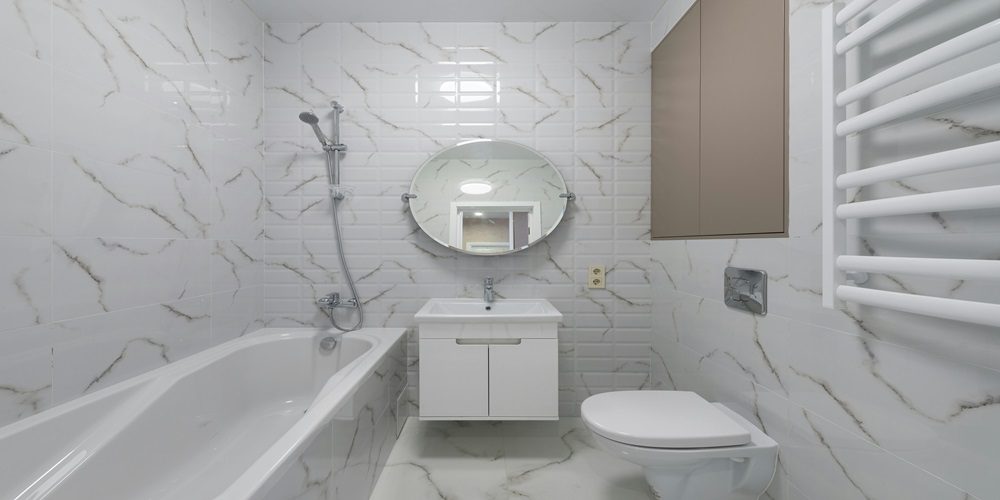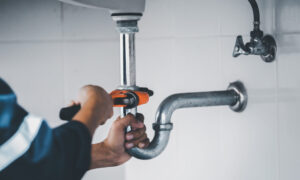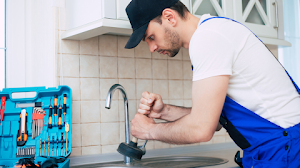Plumbing problems can strike at any time, leaving homeowners feeling overwhelmed and frustrated. From leaky faucets to clogged drains, these issues can disrupt daily routines and cause a major headache. In this blog post, we will discuss the top plumbing problems that every homeowner should be aware of in order to prevent costly repairs and keep their home running smoothly. So grab your tool belt and get ready to tackle these common plumbing woes head-on!
Introduction: Why plumbing problems are a common issue for homeowners
When it comes to owning a home, there are plenty of responsibilities and tasks that come along with it. One of the most common issues that homeowners face is plumbing problems. These issues can range from minor annoyances to major emergencies, and they can happen at any time.
In this section, we will discuss why plumbing problems are a common issue for homeowners. We will explore the various factors that contribute to these issues and explain why they should not be taken lightly.
Factors Contributing to Plumbing Problems:
There are several factors that contribute to the prevalence of plumbing problems in homes. The first and most obvious factor is wear and tear over time. As pipes, fixtures, and other components of your plumbing system age, they become more susceptible to damage or malfunctioning. This wear and tear can be exacerbated by other factors such as high water pressure, exposure to harsh chemicals or extreme temperatures.
Another factor contributing to frequent plumbing problems is human error or negligence when it comes to maintenance and proper usage. Many homeowners may overlook routine maintenance tasks such as drain cleaning or fail to address minor issues before they escalate into larger ones.
Additionally, some people do not use their plumbing systems correctly, leading to clogs or damages. For example, flushing non-biodegradable items down the toilet or pouring grease down drains can cause significant blockages in the pipes.
Why Plumbing Problems Should Not Be Ignored:
Plumbing problems may seem like a minor inconvenience at first glance but ignoring them can lead to severe consequences for both your home and your wallet. Ignoring small leaks in faucets or toilets can result in wasted water and increased water bills.
Moreover, unresolved plumbing issues can escalate quickly into costly repairs if left unattended. A small leak now could turn into a burst pipe later on if not addressed promptly.
Furthermore, failing to fix plumbing problems immediately can also impact the overall structural integrity of your home. Water damage caused by faulty pipes or fixtures can lead to mold growth and weaken the foundation of your home, putting you and your family at risk.
Common Causes of Plumbing Problems: Identifying the root causes of plumbing issues
When it comes to plumbing problems, the saying “prevention is better than cure” couldn’t be more true. By understanding the common causes of plumbing issues, homeowners can take proactive measures to prevent them from happening in the first place. Identifying and addressing the root causes of plumbing problems can save you time, money, and headaches in the long run.
One of the most common causes of plumbing issues is clogs or blockages in drains and pipes. These blockages can be caused by various factors such as hair, grease buildup, food particles, or foreign objects being flushed down the drain. Over time, these blockages can cause slow drainage or even complete backups that require professional intervention.
Another culprit behind many plumbing problems is water pressure fluctuations. Low water pressure can indicate a problem with your water line or a clogged aerator on your faucet. On the other hand, high water pressure can put strain on your pipes and fixtures leading to leaks and bursts. It’s important to regularly check your home’s water pressure and address any abnormalities as soon as possible.
Leaks are also common plumbing problems that homeowners face. These leaks can occur due to faulty fixtures like faucets or toilets, worn out seals in pipes, or cracks in pipe joints. Not only do leaks waste water and increase your utility bills but they can also cause damage to walls, floors, and ceilings if left untreated.
Tree roots are another major cause of plumbing issues that often get overlooked. Tree roots are naturally drawn towards moisture sources which makes your underground sewage lines an ideal target for their growth. As these roots grow inside the pipes seeking moisture and nutrients they cause damage leading to clogging and eventually cracked pipes.
Older homes may face challenges with their piping systems as well. Galvanized steel pipes were commonly used before copper piping became popular but over time these steel pipes corrode from within causing frequent leaks leading to low water pressure issues.
Extreme weather conditions such as freezing temperatures can also cause plumbing problems. Frozen pipes are a common issue in colder climates, which can lead to burst pipes and extensive water damage. Taking precautions such as insulating pipes or leaving faucets dripping during extreme weather can help prevent this from happening.
Clogged Drains and Toilets: How to prevent and address these common blockages
Clogged drains and toilets are common plumbing problems that can be frustrating and inconvenient for any homeowner. Not only do these blockages disrupt daily household activities, but they can also result in costly repairs if not addressed promptly. Therefore, it is essential to understand how to prevent and address these issues.
The most common cause of clogged drains and toilets is the buildup of debris such as hair, soap scum, food particles, or foreign objects like paper towels or wipes. To prevent these blockages, it is crucial to be mindful of what you put down your drains and toilets. Avoid pouring grease, oils, or coffee grounds down the kitchen sink and ensure that all food scraps are disposed of in a trash can. In the bathroom, use a drain cover to catch hair and other debris before it goes down the drain.
Regular maintenance is also key to preventing clogs in your pipes. Once a month, pour hot water down each drain to help clear out any potential buildup. You can also make a natural mixture of vinegar and baking soda by mixing equal parts of both ingredients and pouring it down the drain followed by hot water. This solution works to break up any organic matter stuck in your pipes.
In addition to prevention methods, knowing how to address a clogged drain or toilet when it does happen is essential. The first step is identifying where the blockage is located – whether it’s just one specific sink or toilet or multiple areas within your home’s plumbing system.
For smaller clogs caused by minor buildup, using a plunger may solve the issue easily. However, for more severe blockages further into your pipes or sewer line, professional assistance may be required. A plumber will have specialized tools such as hydro jetting equipment that uses high-pressure water jets to effectively break up tough clogs without causing damage to your plumbing system.
Another common method used by plumbers for severe blockages is snaking – using an auger to maneuver through and remove the clog. This method is effective for large clogs caused by tree roots infiltrating your sewer line.
Leaks and Dripping Faucets: Tips for fixing leaks and saving on water bills
Leaks and dripping faucets are two of the most common plumbing problems that homeowners face. Not only are they annoying, but they can also lead to higher water bills if left unchecked. In this section, we will discuss some tips on how to fix leaks and dripping faucets and ultimately save money on your water bill.
Firstly, it’s important to understand the cause of leaks and dripping faucets. Most often, these issues occur due to worn out or faulty seals within the faucet mechanism. These seals are responsible for creating a tight seal between moving parts in the faucet, preventing any water from escaping when not in use.
To fix a leaky faucet, start by turning off the main water supply. This is usually located under your sink or near your hot water heater. Then, remove the handle of the faucet by unscrewing it counterclockwise with a wrench or screwdriver. Next, locate the cartridge or valve inside the faucet body – this is where you’ll find the seals that need to be replaced.
At your local hardware store, look for a replacement kit specifically designed for your type of faucet. It typically includes new seals and O-rings as well as instructions on how to properly install them.
Once you have all necessary materials, carefully remove and replace each individual seal with its corresponding new one according to the instructions provided in the kit. Make sure everything fits snugly before reattaching the handle and turning on your water supply again.
Low Water Pressure: Reasons why you may have low water pressure and how to fix it
Low water pressure is a common plumbing issue that many homeowners face. It can be frustrating and inconvenient, whether you’re trying to take a shower or wash dishes. Having low water pressure can also indicate a larger underlying issue in your plumbing system. To help you better understand this problem, we’ll discuss the reasons why you may have low water pressure and how to fix it.
1. Clogged Pipes: One of the most common causes of low water pressure is clogged pipes. Over time, mineral deposits, debris, and rust can build up inside your pipes, restricting the flow of water. This buildup can also lead to other plumbing problems such as leaks and bursts. If you suspect that your pipes are clogged, it’s best to call a professional plumber who can use specialized tools to clear out the blockage.
2. Faulty Pressure Regulator: Every home has a pressure regulator that controls the amount of water flowing through the main line into your house. If this regulator is faulty or malfunctioning, it can cause low water pressure throughout your entire home. In some cases, simply adjusting the regulator may solve the problem; however, if it’s damaged or worn out, it will need to be replaced by a professional.
3. Corroded Pipes: As pipes age, they become susceptible to corrosion from minerals and chemicals in the water supply. This corrosion can cause narrow spots or holes in your pipes which restricts water flow and decreases pressure. You may notice discolored or foul-smelling water when this happens. A plumber can inspect your pipes and replace any corroded sections to improve your overall water flow.
4 Bernoulli’s Principle: This principle states that as fluids move faster they create lower pressures behind them.This means that certain fixtures in your home (such as toilets) could be causing low pressure issues elsewhere due to their rapid outflow of large amounts of fluid.
5.Sediment Buildup in Water Heater: If you have a water heater, sediments from the water supply can settle at the bottom of the tank over time. This buildup not only reduces your water heater’s efficiency but can also restrict water flow and cause low pressure. Flushing out your water heater regularly can help prevent this issue.
Burst Pipes: What to do in the case of
Burst pipes are a common plumbing issue that can quickly turn into a nightmare for homeowners. Not only do they cause severe water damage to your home, but they can also result in hefty repair costs if not addressed promptly. In this section, we will discuss everything you need to know about burst pipes and what steps you should take in case of an emergency.
What Causes Burst Pipes?
Before delving into the steps on what to do in case of burst pipes, it’s essential first to understand the underlying causes behind them. Some of the most common reasons for burst pipes include:
1. Freezing temperatures: When temperatures drop below freezing, the water inside your pipes can freeze and expand, causing them to burst.
2. Ageing or corroded pipes: Over time, old and corroded pipes become weak and prone to bursting.
3. High water pressure: Excessively high water pressure puts strain on your pipes, leading them to crack or burst.
4. Tree root intrusion: Trees seeking moisture can penetrate underground pipes, causing them to rupture.
What To Do In Case Of Burst Pipes
If you experience a burst pipe in your home, quick action is crucial for minimizing damage and reducing repair costs. Here’s what you should do:
1. Shut off the main water supply: The first step is to stop the flow of water by turning off the main valve located near your meter or at the point where the main line enters your house.
2. Open faucets: Once you have turned off the main supply valve, open all faucets in your home (both hot and cold). This will help release any remaining water from the system and relieve pressure on other parts of your plumbing system.
3. Locate and assess the damage: Next, locate where exactly the pipe has burst and examine its severity. If it’s a small leak that hasn’t caused significant damage yet, you may be able to fix it yourself with a patch or sealant.
4. Call a professional plumber: Burst pipes are not something you can DIY, and it’s crucial to call a licensed plumber immediately. They will have the necessary tools and experience to fix the issue properly and prevent any further damage.
5. Clean up the water: While waiting for the plumber to arrive, start cleaning up any standing water to prevent mold growth and further damage to your home.
Conclusion
As a homeowner, it is important to be aware of the common plumbing problems that can occur in your home. With these tips and knowledge, you can take preventative measures to avoid potential issues and save yourself time and money in the long run. However, if faced with any of these top plumbing problems, it is best to call a professional plumber for assistance. By staying informed and taking proper care of your plumbing system, you can ensure a functional and comfortable home for years to come.



































